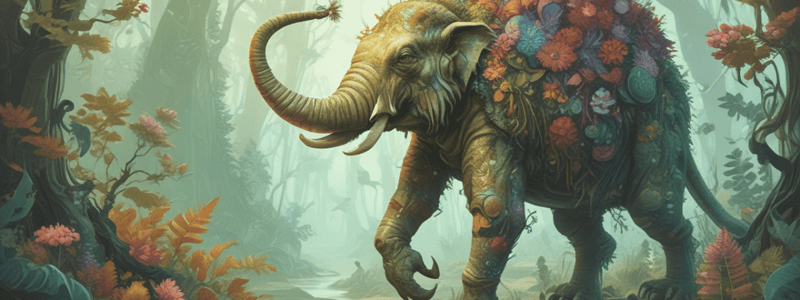Podcast
Questions and Answers
Why are invasive species like the mongoose so successful in non-native environments?
Why are invasive species like the mongoose so successful in non-native environments?
- Native species in the new environment lack adaptations to defend against the invasive species. (correct)
- Invasive species are always successful due to genetic modifications.
- Invasive species have fewer predators in non-native environments.
- Invasive species are more aggressive and dominant than native species.
What usually determines if a species is considered invasive in a particular area?
What usually determines if a species is considered invasive in a particular area?
- The extinction of native species it causes or threatens. (correct)
- Its popularity with the local human population.
- The economic benefit it brings to the region.
- The size of its population in the new habitat.
Why might an introduced species be considered invasive in one area but not in its native habitat?
Why might an introduced species be considered invasive in one area but not in its native habitat?
- Predators in the native habitat keep the introduced species population in check.
- The introduced species evolves different traits in the new environment.
- The introduced species is more adaptable to non-native environments.
- Native species in the new environment have defense mechanisms against the introduced species. (correct)
What effect can co-evolution between a predator and its prey have on their relationship?
What effect can co-evolution between a predator and its prey have on their relationship?
How does the absence of predators in a new habitat affect the population of an introduced species?
How does the absence of predators in a new habitat affect the population of an introduced species?
What factor differentiates an invasive species from a non-invasive one?
What factor differentiates an invasive species from a non-invasive one?
Why are non-native species like the mongoose often considered invasive?
Why are non-native species like the mongoose often considered invasive?
What is a key reason why an introduced species can be invasive in a new area but not in its native habitat?
What is a key reason why an introduced species can be invasive in a new area but not in its native habitat?
What contributes to the success of invasive species like the mongoose in non-native environments?
What contributes to the success of invasive species like the mongoose in non-native environments?
What ecological impact does an invasive species like the mongoose have on a new habitat?
What ecological impact does an invasive species like the mongoose have on a new habitat?
How does the absence of predators affect the population dynamics of an introduced species in a new habitat?
How does the absence of predators affect the population dynamics of an introduced species in a new habitat?
What distinguishes an invasive species from a non-invasive one in a particular area?
What distinguishes an invasive species from a non-invasive one in a particular area?
Why do non-native species often thrive in new habitats?
Why do non-native species often thrive in new habitats?
What is one reason why an invasive species may not cause ecological harm in its native habitat?
What is one reason why an invasive species may not cause ecological harm in its native habitat?
Flashcards are hidden until you start studying




